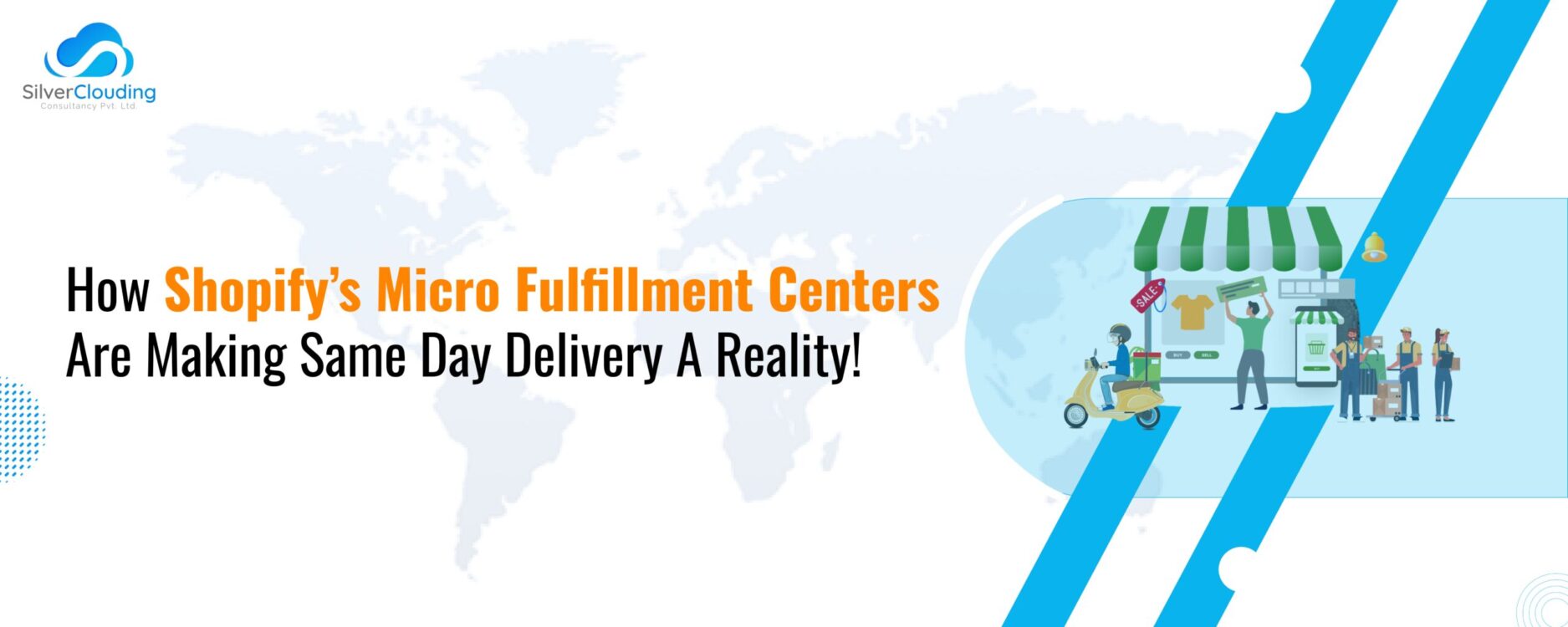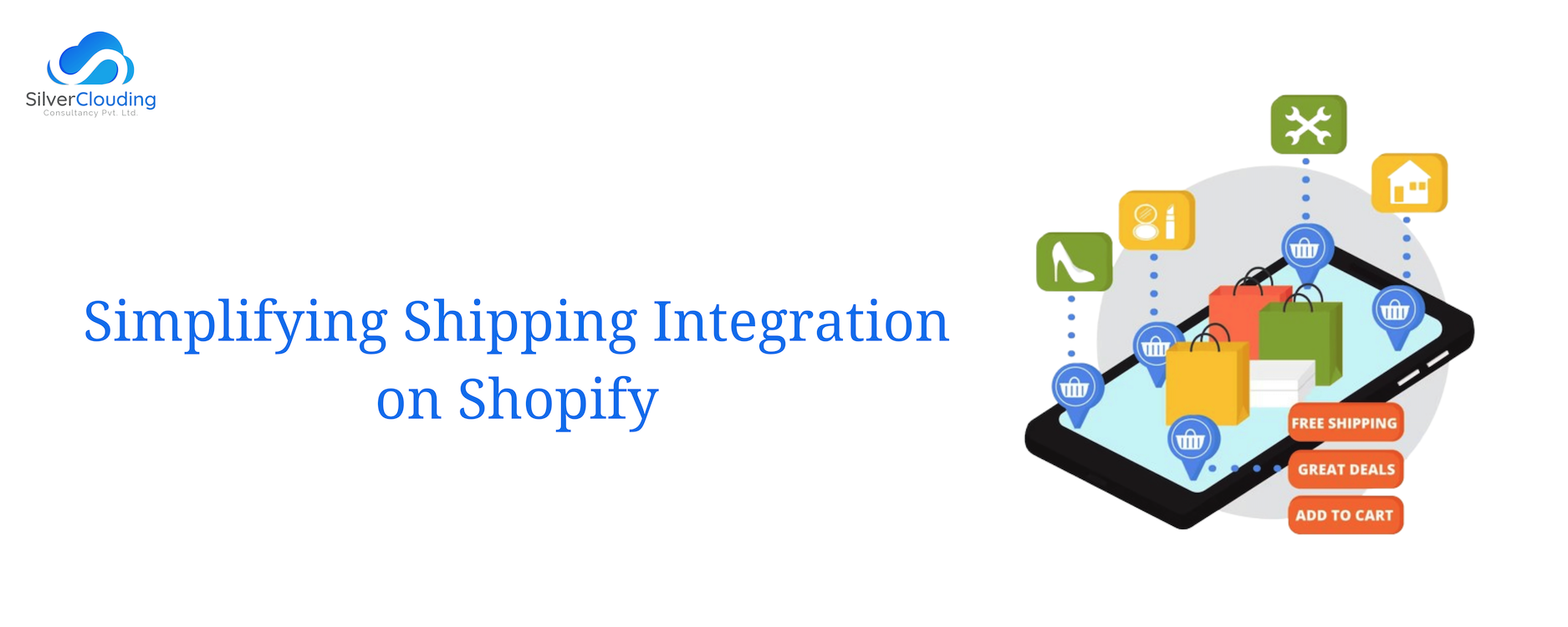Introduction
Shipping times directly influence buyers, and no online retailer can deny this. To stand out in this e-commerce industry, businesses should meet basic customer expectations, and fast and convenient delivery is one of them. Shopify is a top-rated commerce platform that arranges everything to fulfill the growing demands of customers. They invest in building fulfillment strategies around micro-fulfillment centers. It enables retailers to adopt new ideas to bridge the gap between the shipping location of the order and when the customer gets it on their doorstep.
There are several things to understand, such as how Shopify offers merchants a competitive edge and ensures a satisfying customer experience. In this article, you will learn about micro-fulfillment centers and how they have become the heart of Shopify’s same-day delivery concept.
What are Micro-Fulfillment Centers?
Micro-fulfillment centers are distribution centers or small-scale warehouses. Shopify merchants use these centers to receive and store inventory. All the deliverable items are also packaged here and shipped to the customer’s doorstep. It helps handle high volumes of e-commerce orders efficiently without any delay. MFCs aim to simplify logistics operations. Shopify sets up these warehouses in urban or suburban areas. Therefore, retailers can reach customers fast and facilitate them with same-day delivery.
These small-scale warehouses use advanced automation systems, robotics, and real-time inventory management systems to fulfill online orders quickly. So, if you are curious about Shopify’s secret to speed, micro fulfillment centers are the answer.
How Micro-Fulfillment Centers Differ From Traditional Warehouses?
Most of the time, the concept of micro-fulfillment centers and traditional warehouses looks the same, but there are huge differences. The size of conventional warehouses is thousands to millions of square feet, whereas micro-fulfillment centers are small-scale storage facilities. The location also varies for MFCs and traditional warehouses. These centers are usually located in populated areas, even with high rental costs. Still, traditional warehouses are often located in remote or industrial areas, where the rental expense is lower.
In terms of inventory, conventional warehouses store an extended variety of products to cover a broad range of customers’ needs. On the other hand, MFCs store only high-demand products to prioritize order fulfillment. The most considerable difference is that MFCs support next-day or same-day deliveries, whereas traditional warehouses ensure affordable shipping options.
What are the Fulfillment Network Strategies Shopify Follows?
Depending on decentralization, intelligence, and merchant empowerment, Shopify decides its fulfillment strategies. Integrating technology allows merchants to connect effortlessly with the Shopify Fulfillment Network. It helps track orders seamlessly, increases inventory visibility, and suggests usable automation tools. Shopify also analyzes customers’ purchasing patterns with a machine learning process and places inventory in the right locations where the ordering probability is high.
Third-party partnerships are another fulfillment network strategy that Shopify follows. Working with logistics partners allows them to extend their utility without owning any warehouse directly. So, following these strategies helps Shopify scale efficiently and ensures fulfillment services for the merchants.
Advantages of Shopify’s Micro-Fulfillment Approach
Investment in micro-fulfillment technology and infrastructure is the key that helps Shopify ensure a list of advantages:
- Same-Day and One-Day Delivery: Speeding up the complete process is the primary advantage of Shopify’s micro-fulfillment approach. Because of the easy availability of the product, Shopify merchants can process orders quickly and deliver parcels faster. So, same-day or next-day delivery is a prime advantage for micro-fulfillment centers.
- Reduced Shipping Costs: Customers do not need to pay extensive shipping charges because of the shorter delivery distance. Why? As the distance is shorter, it minimizes carrier fees, especially for last-mile delivery.
- Ensure Customer Satisfaction: Faster delivery time, minimum delivery charge, and availability of the products are the key things that leave every customer satisfied. With the help of micro-fulfillment centers, Shopify merchants can lead to happier customers and maximize the retention rate.
- Enhance Scalability for Marchants: All-sized businesses can access enterprise-grade logistics with this approach. They do not need to build their systems, whether their business size is small or large.
- Bring Order Accuracy: MFCs lead to fewer fulfillment errors with the introduction of automation. It helps smaller merchants stay strong like e-commerce giants.
Challenges Associated with This Approach
Nothing in this world is challenge-free. Though there are many advantages, the micro-fulfillment approach also has several challenges. Here are the common difficulties Shopify faces:
- Hazardous Inventory Management: Splitting inventory across smaller locations can bring hazards, increasing the risk of stockouts or overstock.
- Investment: The initial capital investment for MFC space and technology is high. Therefore, Shopify requires upfront resources to stay aligned with the demand.
- Complex Logistic Coordination: Managing last-mile delivery can be a hassle, especially across multiple urban locations. Thus, Shopify needs a strategic approach to work with these layers of complexity.
- Data Accuracy: As customer demands fluctuate, predicting the right place to deliver is hard. So, following highly accurate forecasting models is essential.
Therefore, continuous optimization and advanced infrastructure are vital to maintaining service quality.
How Does Shopify Overcome These Restrictions?
Being a top online business platform, Shopify is always ready to address these challenges. They use AI-driven models to track the consumer’s demand and optimize inventory placement. Therefore, it helps maintain the stock balance. The seamless integration of technology shows real-time order and inventory tracking while minimizing errors. It also helps improve the fulfillment speed.
Today, robotics and automation systems are widely used for MFCs. Integrating these systems increases efficiency and escalates accuracy without sacrificing control. So, Shopify focuses on building an intelligent and flexible logistics system that enables them to serve people with same-day delivery facilities.
The Future of Fulfillment
The rise of micro-fulfillment centers indicates an evolution in how e-commerce giants think about their logistics. As consumer demands evolve daily, fulfillment networks must become smarter and faster. Shopify understands this well and continues to expand its micro-fulfillment footprint effectively. The growing demand for sustainable practices makes Shopify use electric delivery fleets and greener packaging. In the future, AI-enabled forecasting will influence the customer experience. Therefore, Shopify has decided to stay at the forefront of the same-day delivery revolution by unveiling innovations.
Final Thoughts
Finally, being the most dependable online platform, Shopify offers same-day delivery not for luxury but for necessity. It helps Shopify compete in this retail environment and empowers merchants to meet the modern consumer’s demands. Every Shopify merchant should remember that same-day delivery could intensify their e-commerce business, among others, and can create a winning situation. So, Shopify ensures its merchants are setting the pace and empowering them to meet the level of success.
References
https://www.shopify.com/in/blog/micro-fulfillment
https://www.hotwax.co/blog/how-can-retailers-offer-shopify-same-day-delivery
https://www.shopify.com/in/retail/last-mile-delivery
https://www.shopify.com/in/blog/shopify-fulfillment-network-2-day-delivery
https://www.shopify.com/in/blog/micro-fulfillment
https://www.hotwax.co/blog/how-can-retailers-offer-shopify-same-day-delivery





Leave A Reply
You must be logged in to post a comment.